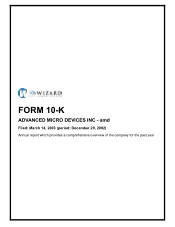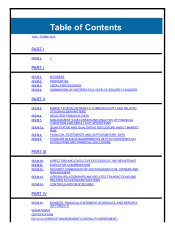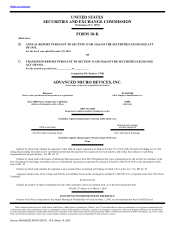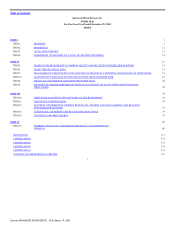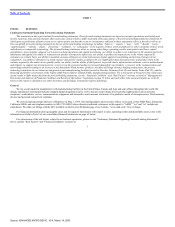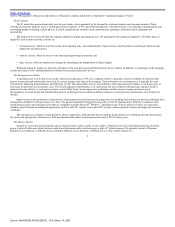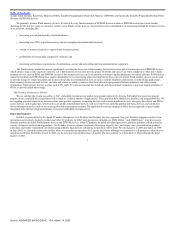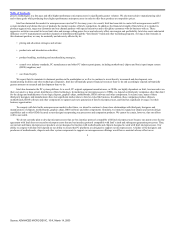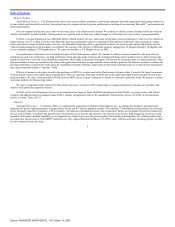AMD 2002 Annual Report Download - page 7
Download and view the complete annual report
Please find page 7 of the 2002 AMD annual report below. You can navigate through the pages in the report by either clicking on the pages listed below, or by using the keyword search tool below to find specific information within the annual report.
Table of Contents
forth in “Management’s Discussion and Analysis of Financial Condition and Results of Operations” beginning on page 15 below.
The IC Industry
The IC market has grown dramatically over the past decade, driven primarily by the demand for electronic business and consumer products. Today,
virtually all electronic products use ICs, including personal computers, or PCs, and related peripherals, wired and wireless voice and data communications and
networking products including cellular phones, facsimile and photocopy machines, home entertainment equipment, industrial control equipment and
automobiles.
The market for ICs can be divided into separate markets for digital and analog devices. We participate in the market for digital ICs. The three types of
digital ICs used in most electronic systems are:
• microprocessors, which are used for control and computing tasks, and complementary chipset devices, which perform essential logic functions that
support the microprocessors;
• memory circuits, which are used to store data and programming instructions; and
• logic circuits, which are employed to manage the interchange and manipulation of digital signals.
Within the digital IC market, we primarily participate in the microprocessor and Flash memory device markets. In addition, we participate in the emerging
system-on-a-chip, or SoC, embedded processor market for personal connectivity devices.
The Microprocessor Market
A microprocessor is an IC that serves as the central processing unit, or CPU, of a computer system. It generally consists of millions of transistors that
process system data and control other devices in the system, acting as the brain of the computer. The performance of a microprocessor is typically the most
critical factor impacting the performance and efficiency of a PC and other similar devices. One indicator of microprocessor performance is work-per-cycle, or
how many instructions are executed per cycle. The second indicator of performance is its clock speed, the rate at which its internal logic operates, which is
measured in units of hertz, or cycles processed per second. Other factors in microprocessor performance include memory storage and access speed.
Developments in circuit design and manufacturing process technologies have resulted in dramatic advances in microprocessor performance over the past two
decades.
Improvements in the performance characteristics of microprocessors and decreases in production costs resulting from advances in process technology have
increased the demand for microprocessors over time. The greatest demand for microprocessors today is from PC manufacturers. With few exceptions, these
manufacturers require x86 microprocessors that are compatible with the Microsoft® Windows® operating system. Factors which we believe are expected to
stimulate growth include an anticipated replacement cycle for older PC systems, lower-priced PC systems, enhanced product features and improved economic
conditions.
The microprocessor market is characterized by intense competition, with rapid advances in product design and process technology driving short product
life cycles and rapid product obsolescence. Intel has dominated the market for microprocessors used in PCs for many years.
The Memory Market
Memory ICs store data and instructions and are characterized as either volatile or non-volatile. Volatile devices lose stored information after electrical
power is shut off while non-volatile devices retain stored information after electrical power is shut off. Volatile memory ICs primarily consist of Dynamic
Random Access Memory, or DRAM, devices and Static Random Access Memory, or SRAM, devices. Non-volatile memory ICs
2
Source: ADVANCED MICRO DEVIC, 10-K, March 14, 2003

